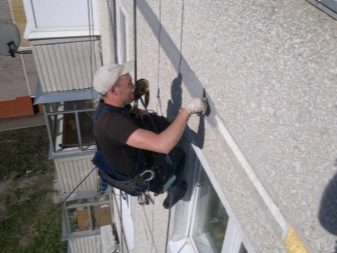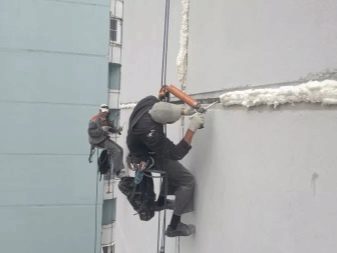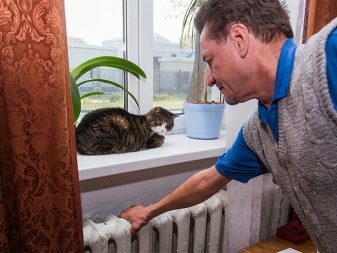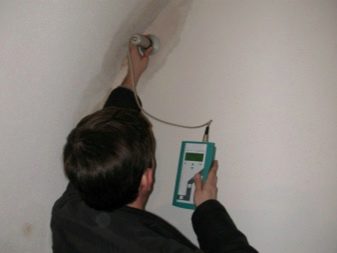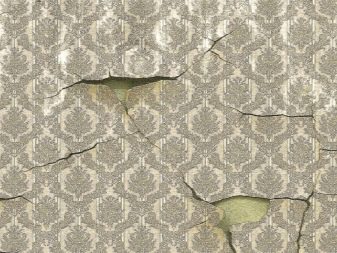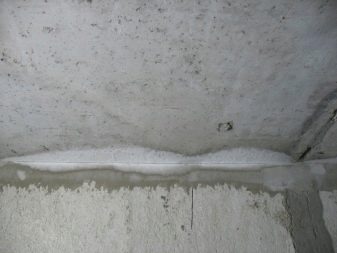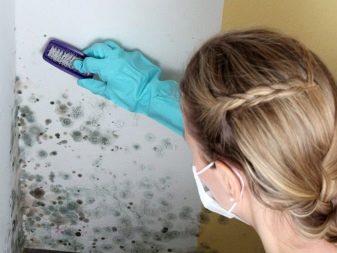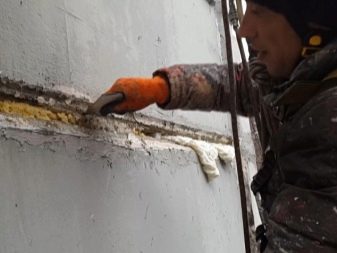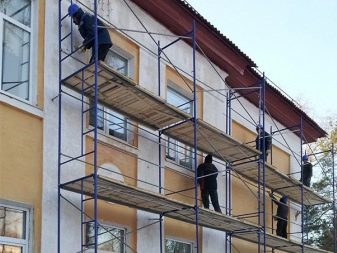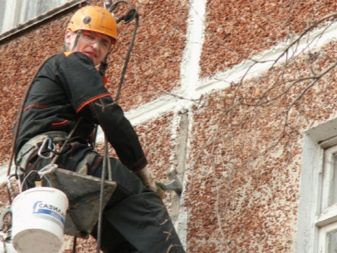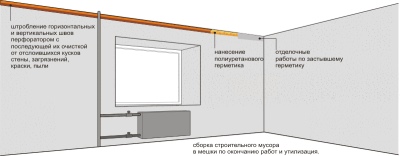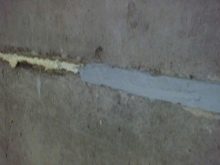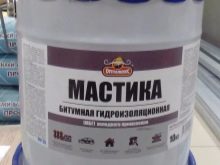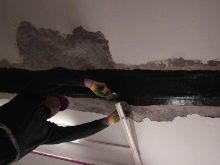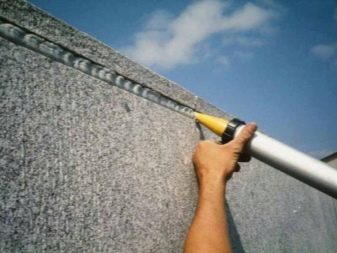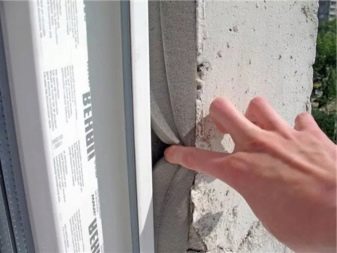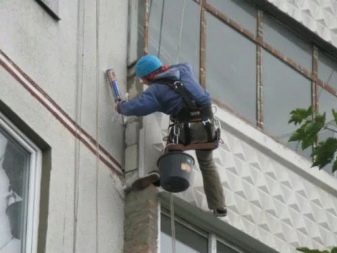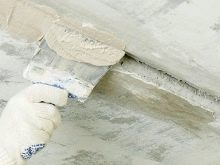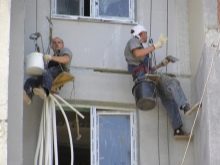Subtleties of the process of thermal insulation of interpanel seams

The main problem of panel structures are poorly seated interpanel seams. This leads to wet walls, the formation of fungus, deterioration of sound insulation, freezing and moisture ingress into the seam. Such joints not only violate the comfort in the apartments, but also can lead to the destruction of the plates. To get rid of this problem, it is necessary to perform repair and insulation of interpanel seams.
What is warming for?
Exterior walls in panel buildings, as a rule, are a three-layer structure. From the inside and outside - reinforced concrete, between which is installed insulation.The panels themselves reliably protect against cold, but the seams between the plates are blown by the wind and are the traditional bridge of cold. Even if the seam is well sealed, but the house is not insulated, apartments lose their temperature.
In cases where insulation is performed poorly, problems may arise:
- insufficient heat in the apartment, provided that the batteries are hot;
- freezing of internal walls opposite the seam;
- condensation and fungus formation;
- Destruction of the finish - the most quickly come off the wallpaper, paint and decorative plaster will last longer.
Due to the fact that the seam is untight, rainwater will fall into it, which will lead to the destruction of the main walls and constantly dampness in the apartments. There are cases when interpanel seams are insulated poorly and poorly sealed on both sides. Accordingly, it reflects badly on the comfort and warmth in living areas.
Understand that you need to insulate the seams is a snap. Identify the problem allow the following symptoms:
- uneven temperature of the inner wall - if it is colder in the area where the interpanel joint is visible from the outside, then it is clear that its sealing is bad;
- there is no finishing from the walls, and there is constant dampness in the room;
- on the facade of the building one can see the insulator lagged behind the seam or its complete absence.
If you have noticed at least one of the above signs, you should contact the relevant organizations for services, because it is difficult to warm the seam with your own hands, and sometimes it is completely impossible.
Materials used
Warming of interpanel seams is carried out by various methods and with use of various materials. Each of them has both advantages and disadvantages, and the choice depends on the operating conditions and on the requirements of the buyer:
- More often full seam sealing is used. Plastic solutions are used for this, which deeply enter the structure and fill all voids. Fine gravel, expanded clay or sand is used as aggregate. Today, you can purchase special insulation materials, which include foam balls. There is also a mixture with particles of air, which retains heat in the room and does not let in the cold, they are of affordable cost.
- If the seams are far apartthen it is appropriate to use soft warming fibers. For these purposes, suitable mineral wool, characterized by a high compression ratio, frost resistance and ease of working with it. Wool particles are pressed into the seams, but be careful, because the material is volatile, it can damage the skin, eyes or lungs. Safety in use differs stone wool with long and durable fibers. Installation is carried out quickly and without difficulty, but do not over-fill the seam with the material, with a tight fit of the fiber will not provide heat protection.
- For small seams It is recommended to use sealants based on polyurethane. The cost of this material is quite high, and you need a rather large amount of it. Warming by means of such sealants is carried out in two ways. Surface - allows you to save material, the nozzle of the dispenser is placed in the seam and the cavity is blown with the mixture. With drilling holes, the seam is expanded with a special tool, the foam is blown out in excess, so that its surpluses remain outside, which must be cut off after hardening.
- Tubes Vilaterma - material which is intended for warming seams. The material is a cylinder of polyethylene foam, the advantage of this technology is also the simultaneous protection against moisture. Tubes remain plastic, even with temperature drops. Their indisputable advantage is a long service life.
What kind of material to choose for the insulation of houses, it is better to consult with professionals.
Facade processing
Warming high-rise buildings from the outside allows you to achieve the best results. But in this case only specialists will be able to do the work, as high-rise works are necessary. Independently seal the seams by renting scaffolding, they allow you to wrap a large widthIn addition, there is a place for tools and materials needed for work.
You can reach the upper floors with the help of a tower, but there is not enough space on the landing. The use of the tower is appropriate if you need long-term work in one place, for example, when the seams have expanded, or you need to clean the cavity of the old insulation.
Referring to professional climbers, be sure to check the certificate confirming compliance with all established standards. As a rule, climbers do not deal separately with sealing of seams, they insulate inter-seam space monolithically, so that the cold does not penetrate in any way. Warming is performed on a thoroughly cleaned and level surface.
Be sure to check that the joint of insulation elements is not in the same place with the joint of the plates. In this case, a cold bridge is formed and it will be very difficult to correct the error.
The price for warming the facade of a multi-storey building depends on the running meter, as a rule, specialists take no more than 350 rubles per meter. You can calculate the approximate cost yourself; you just need to multiply the running meters of your living space by the cost per meter.
The sealing of the apartment takes not too much time, first of all, the period depends on the amount of work, on average, you can cope in 1-2 days. All documents that are needed for construction work, provides a company specializing in the insulation of facades. The client must submit only an application addressed to the Chief Engineer.
Internal work
You can insulate the seams from the inside with your own hands, without the involvement of professionals.Such work can be carried out at any time of the year, there is a lot of space for tools and materials. Before proceeding with the insulation of the seams, it is necessary to remove the old plaster or putty. If necessary, it is also necessary to dismantle the old insulation. You can not proceed to the insulation, without removing old materials. After all, their service life has already expired or the installation does not meet the requirements, with the result that the efficiency of the new thermal insulation will be minimized.
After dismantling old materials, the surface must be carefully leveled. If the cavity between the plates is through, fill it with cementing mixtures. For such purposes, the best cement-sand mortar, which for a long period will close the gap and securely hold the structure. The main problem of working with these defects is ingress of moisture, so waterproofing mastics should be used.
Apply the mixture with a brush, spray or a special spray. After the material hardens, a waterproof elastic protection is formed, which, even after a slight shrinkage or displacement of the house, will remain intact.If the seams are small, the space is filled with sealant and then sealed with tape.
Insulation during construction
Previously, towing or rubber was used to insulate joints during the construction of houses. Today, a key, cement mortar and a swelling cord made of hydrophilic rubber came to replace these materials. But the work of these mixtures can not be called quality, during the installation work there are still gaps, which later let the cold inside.
Qualitatively fill the voids in the seams between the panels can only foam, which evenly spreads and fills the entire space, without the slightest gaps.
It is used in conjunction with sealants, which can also boast of excellent performance and durability.
Sealing joints of loggias and windows
The device of loggias and balconies implies the presence of joints between the slabs and walls through which water gets inside during the rain. Due to the constant dampness, the materials of construction will gradually collapse, a fungus and mold will form on the walls. If the loggia is also not warmed, and cold air gets into it, the furniture deteriorates, and the level of comfort inside is not at all what the tenants expect.To prevent drafts and remove cold bridges, you need to take care of high-quality insulation.
The main reasons for which water flows to a balcony or loggia include:
- poor sealing;
- damaged roof;
- bad ebb or lack thereof.
To determine the cause, as well as plan a further action plan, you need to invite a specialist to inspect the premises. The prerequisite for thermal insulation is the treatment of the joints of the wall and ceiling plate. If you ignore this process, in the near future, the water that will accumulate on the stove, will begin to fall inside.
Sometimes people complain that after installing the windows on the windowsill and the slopes water seeps. This may be due to the fact that between the ebb and the wall there is no sealant at all or there are no ebbs.
Modern materials presented by well-known manufacturers allow you to quickly and, most importantly, with high quality, heat insulation of panel joints. If you can’t do the work outside yourself, and there is no financial opportunity to order the services of specialists, do not despair, because you can insulate the joints from the inside.To avoid unpleasant consequences due to incorrectly performed work, it is recommended to immediately turn to professionals.
On the technology of insulation panel joints, see below.
